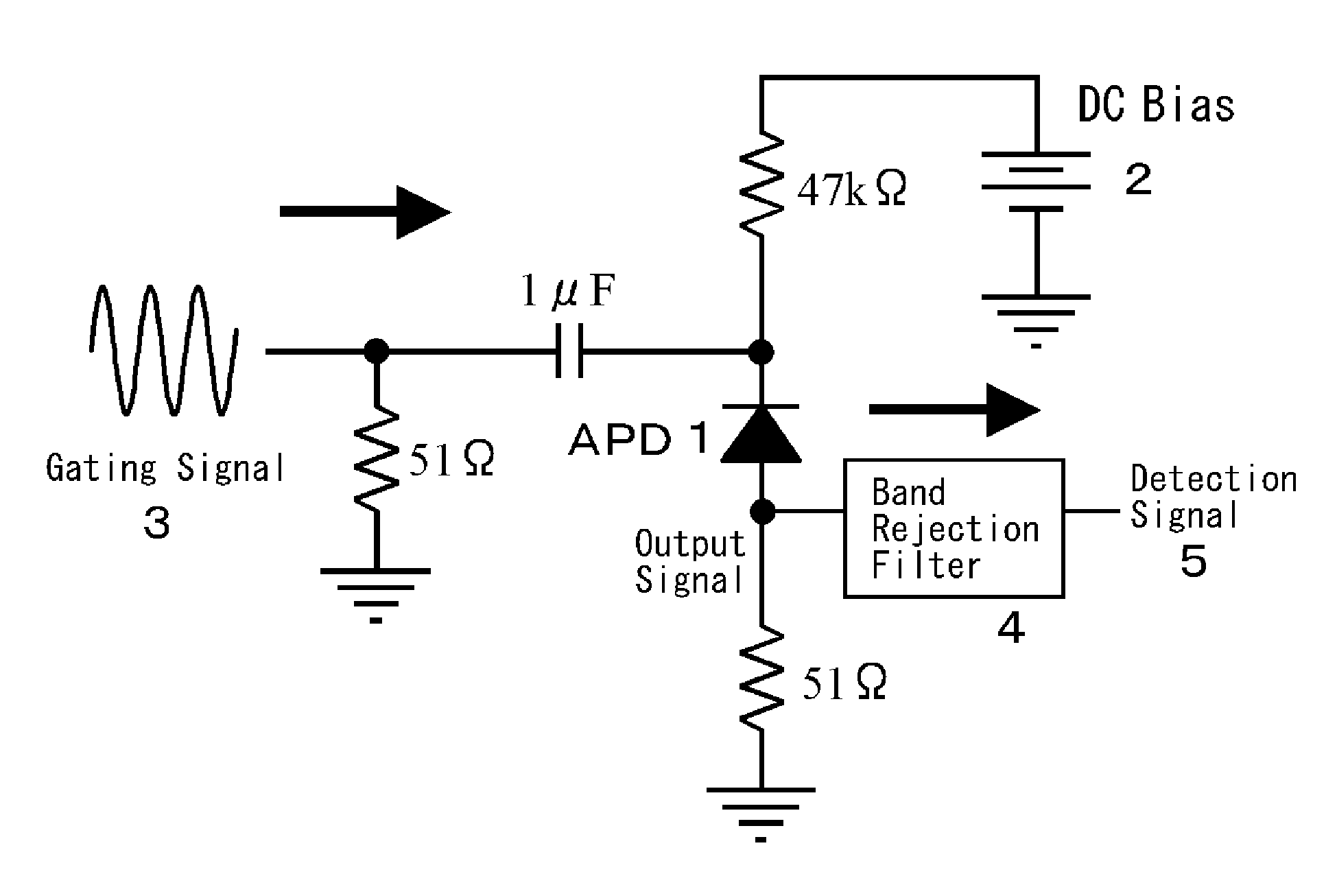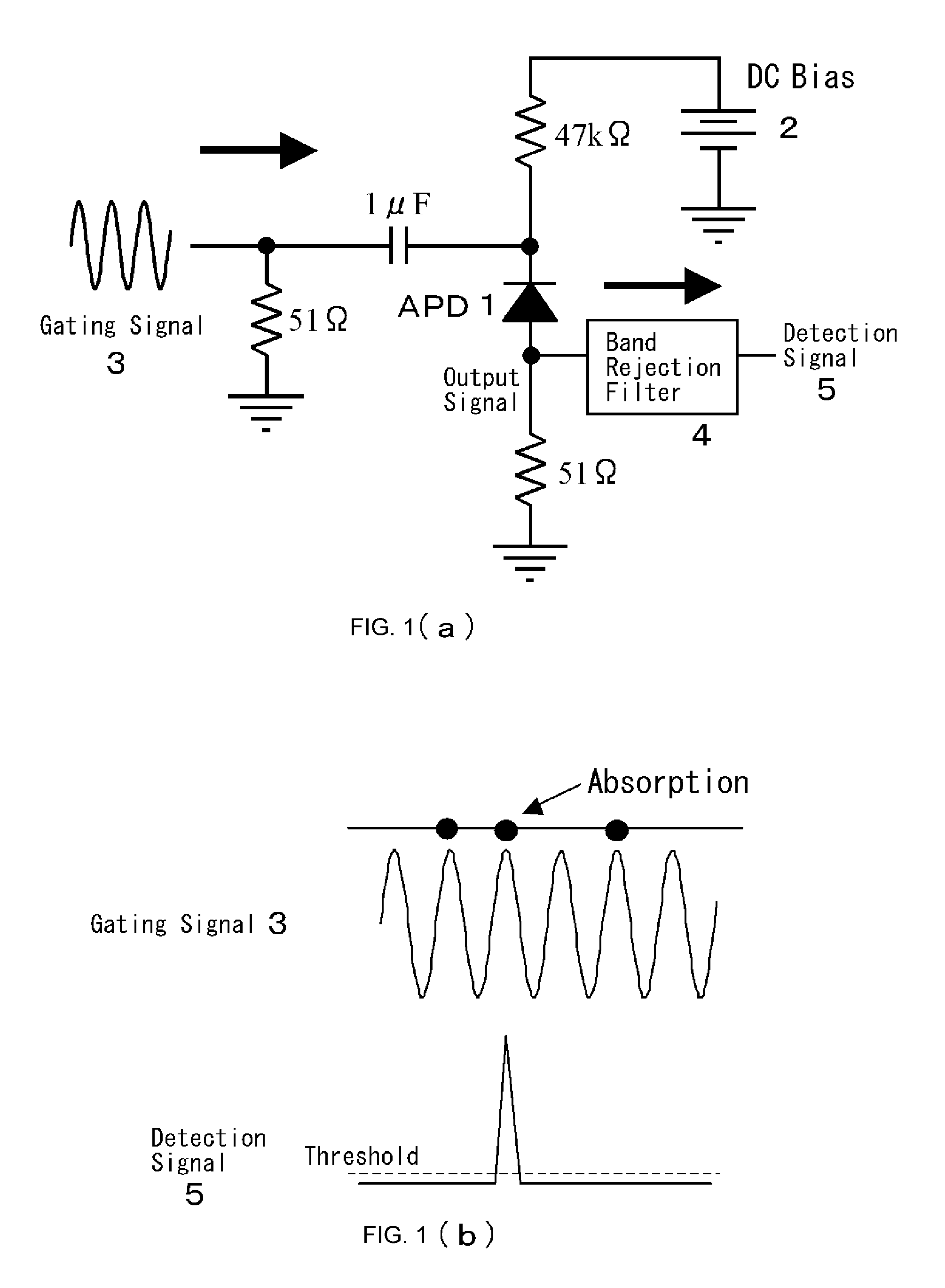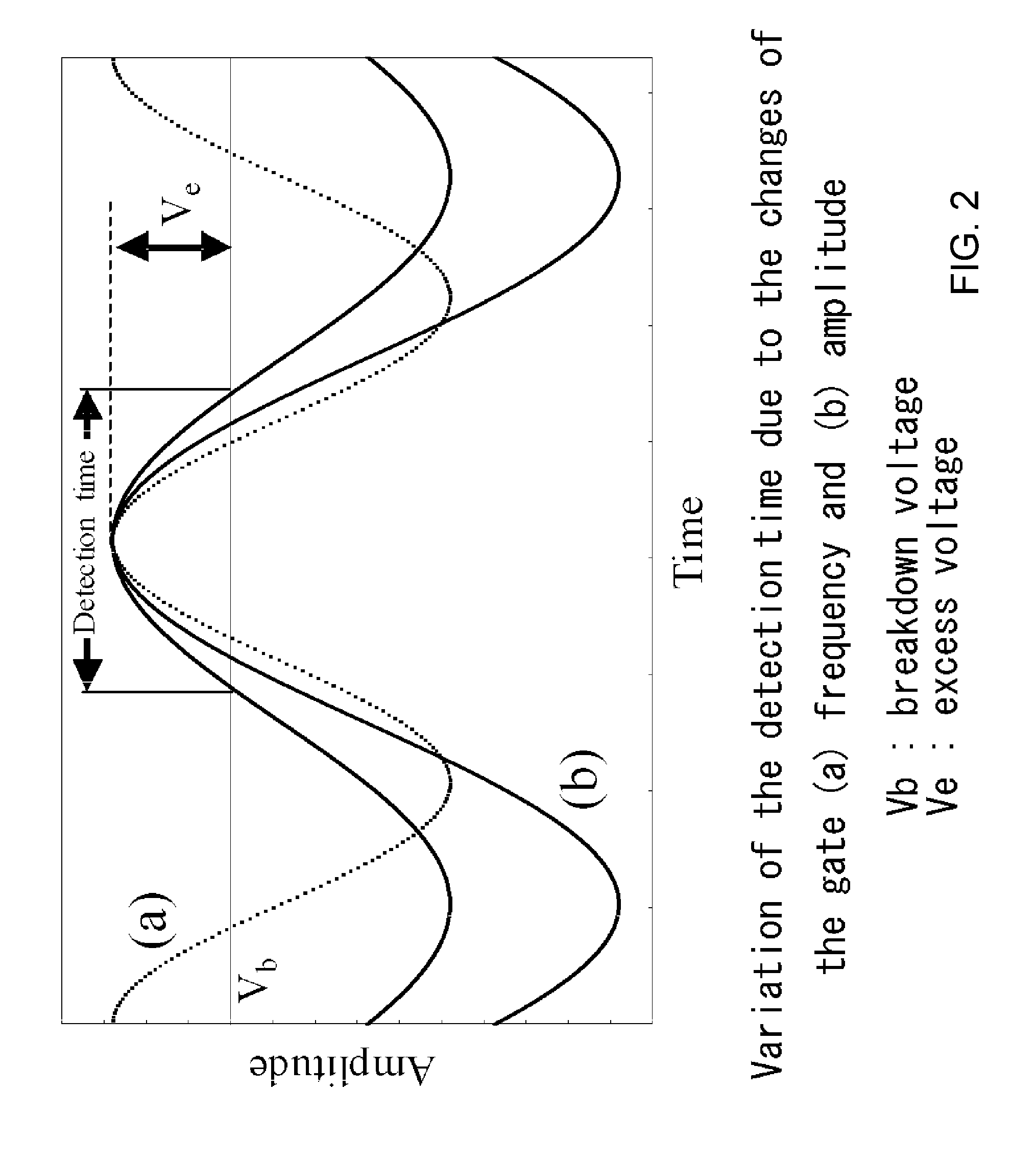High-speed single-photon detector in telecommunication wavelength band
a single-photon detector and optical communication technology, applied in pulse generators, pulse techniques, instruments, etc., can solve the problems of difficult to detect photons, large probability of after pulsing, and inability to detect subsequent photons, so as to reduce improve the sensitivity. , the effect of reducing the probability of pulsing
- Summary
- Abstract
- Description
- Claims
- Application Information
AI Technical Summary
Benefits of technology
Problems solved by technology
Method used
Image
Examples
Embodiment Construction
[0024]Now, an exemplary embodiment of this invention will be described in detail with reference to FIGS. 1 to 17.
Exemplary Embodiment
[0025]The exemplary embodiment of the present invention is a single photon detector wherein a reverse DC bias voltage less than the breakdown voltage is applied to an InGaAs / InP-APD, a sinusoidal gating signal at the frequency of 500 MHz is superimposed with the reverse DC bias voltage in such a manner to exceed the breakdown voltage by about 4V in a fraction of each cycle, and the sinusoidal gating signal passed through the APD is removed by a filter.
[0026]FIG. 1(a) shows a conceptual illustration of the single photon detector of one exemplary embodiment of the present invention. FIG. 1(b) shows the gating signal and the detected signal. In FIG. 1, the avalanche photodiode (APD) 1 is an InGaAs / InP-APD. The DC bias voltage 2 is a reverse bias voltage less than the breakdown voltage of the APD 1. The gating signal 3 is a sinusoidal signal that exceeds t...
PUM
 Login to View More
Login to View More Abstract
Description
Claims
Application Information
 Login to View More
Login to View More - R&D
- Intellectual Property
- Life Sciences
- Materials
- Tech Scout
- Unparalleled Data Quality
- Higher Quality Content
- 60% Fewer Hallucinations
Browse by: Latest US Patents, China's latest patents, Technical Efficacy Thesaurus, Application Domain, Technology Topic, Popular Technical Reports.
© 2025 PatSnap. All rights reserved.Legal|Privacy policy|Modern Slavery Act Transparency Statement|Sitemap|About US| Contact US: help@patsnap.com



